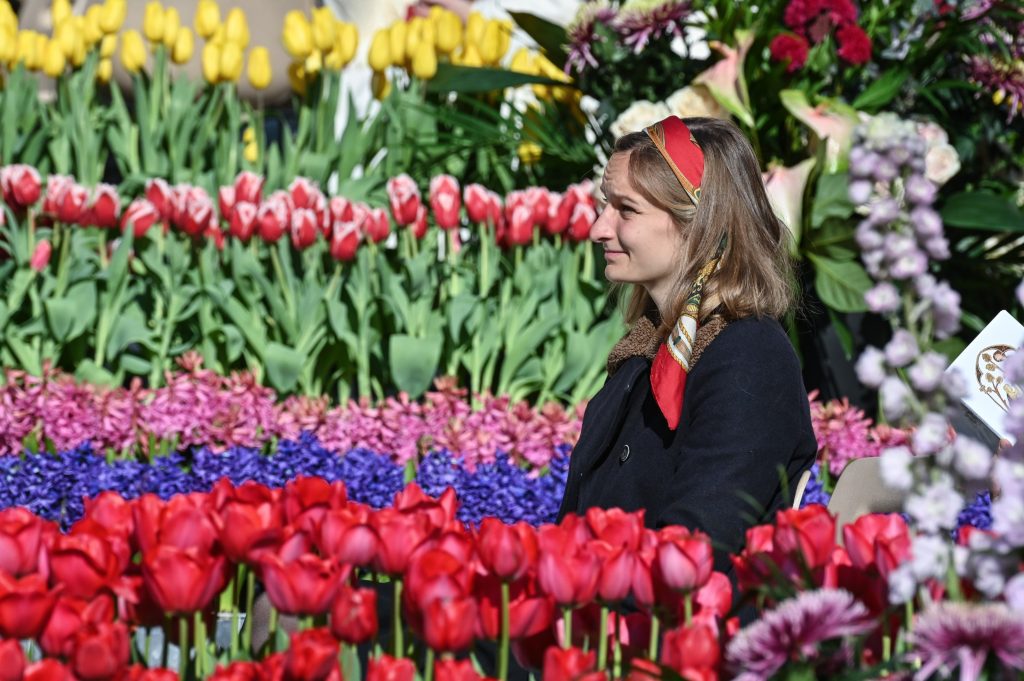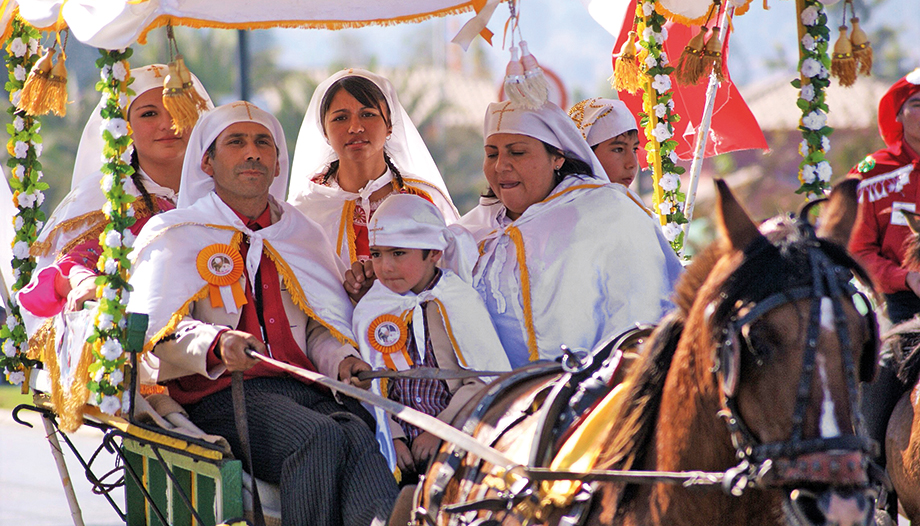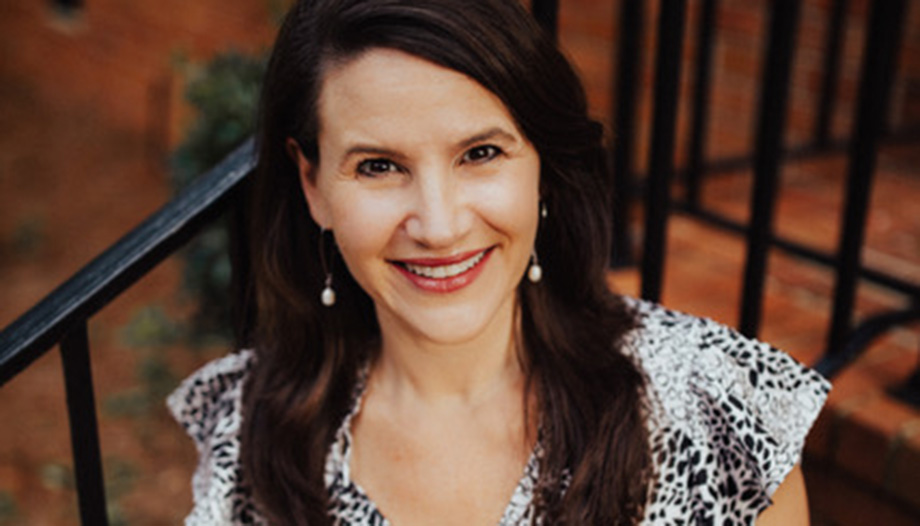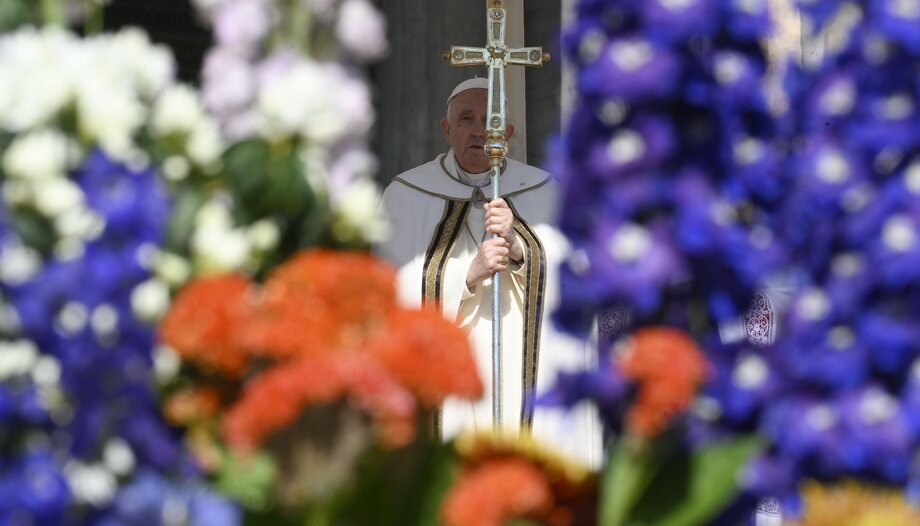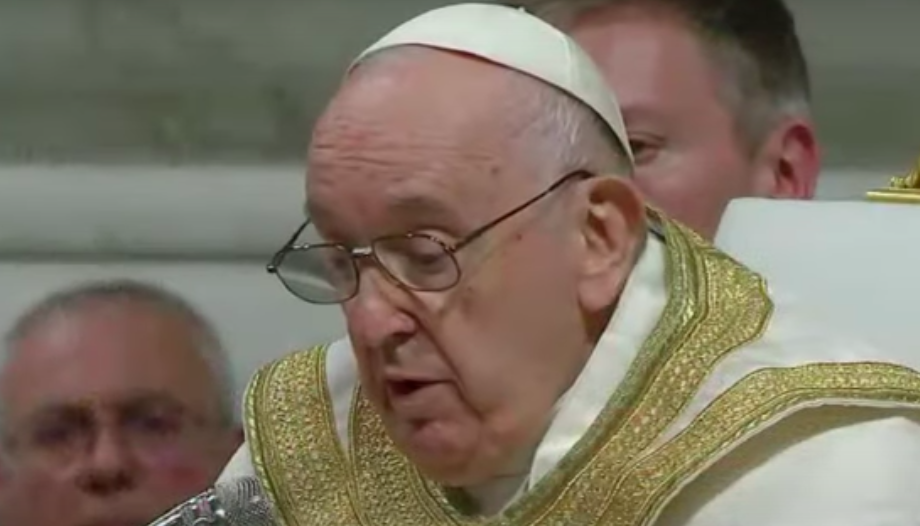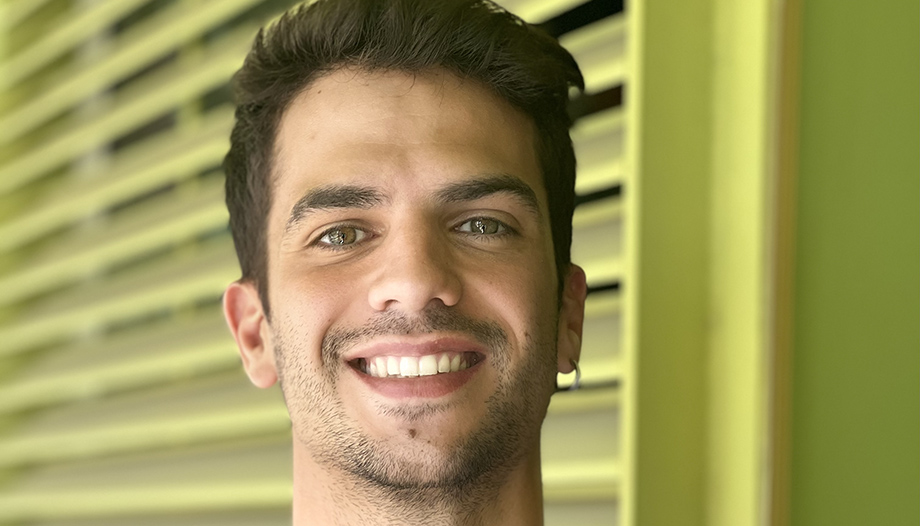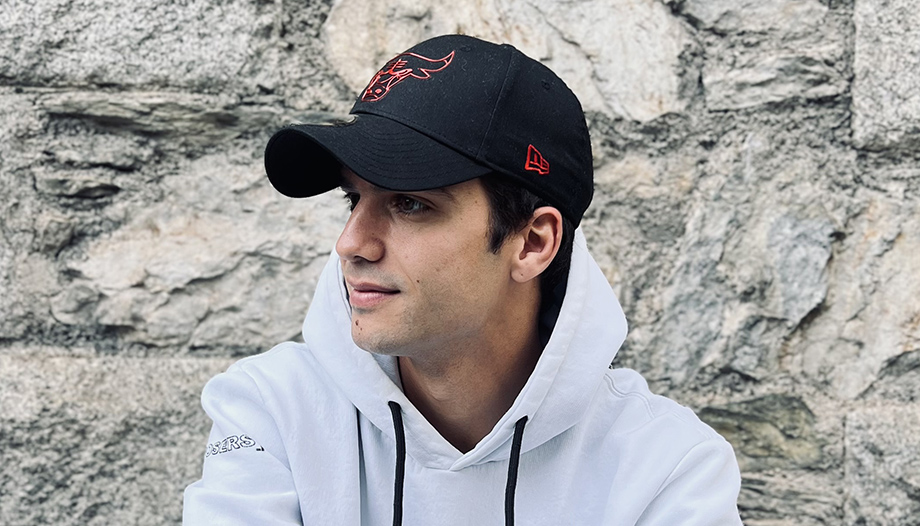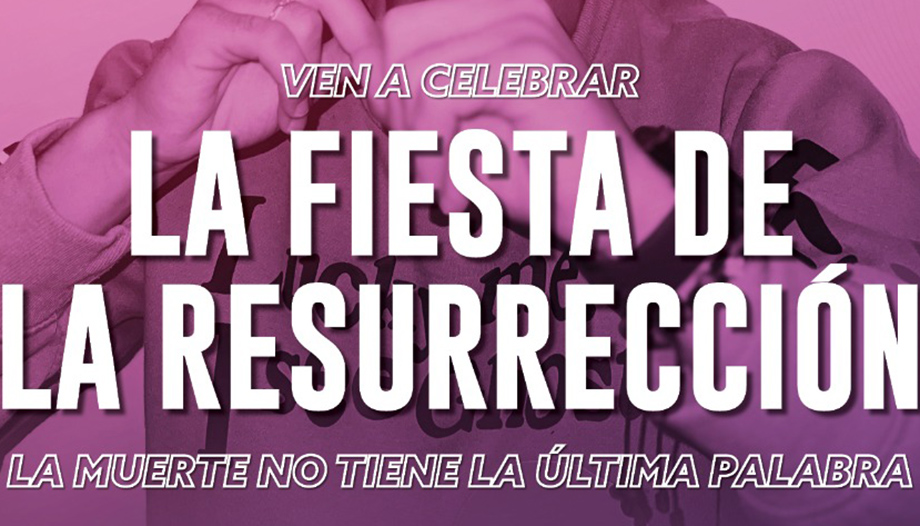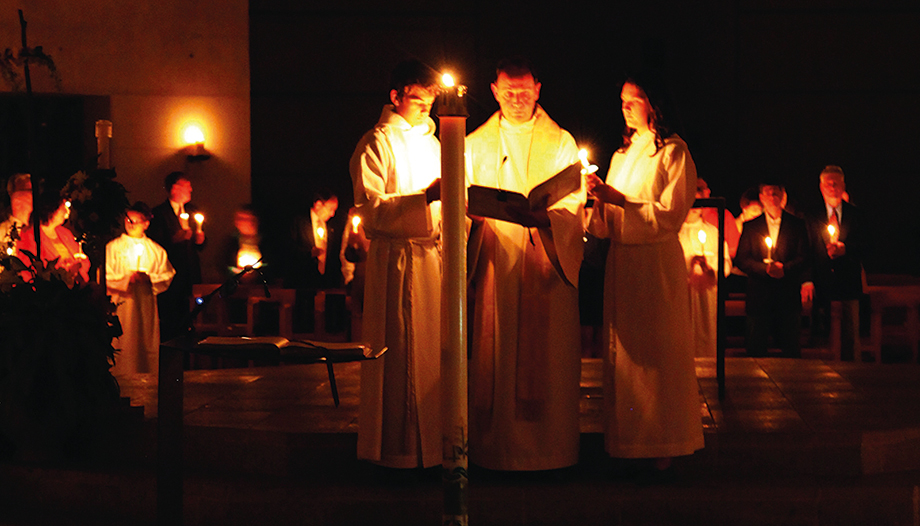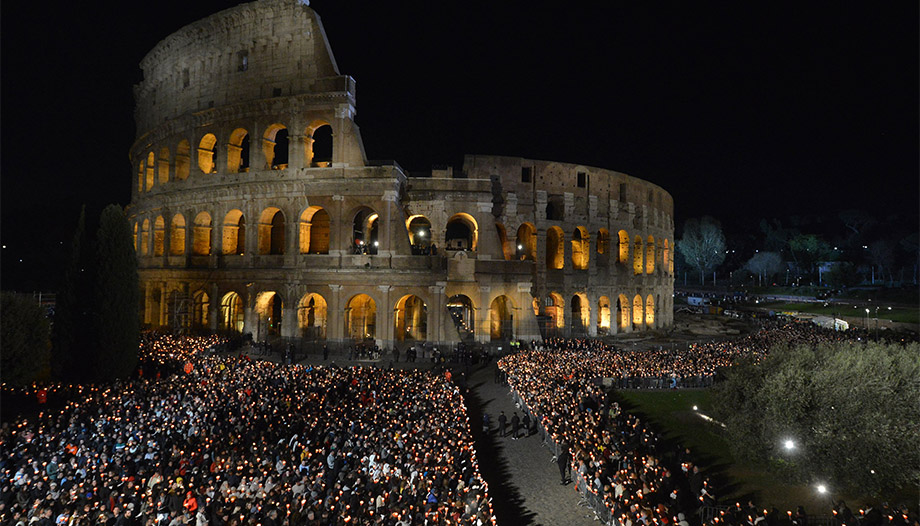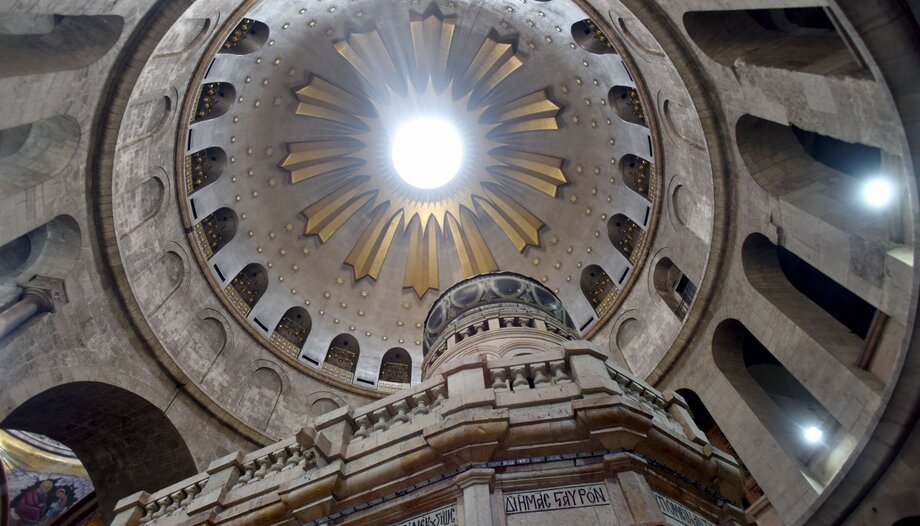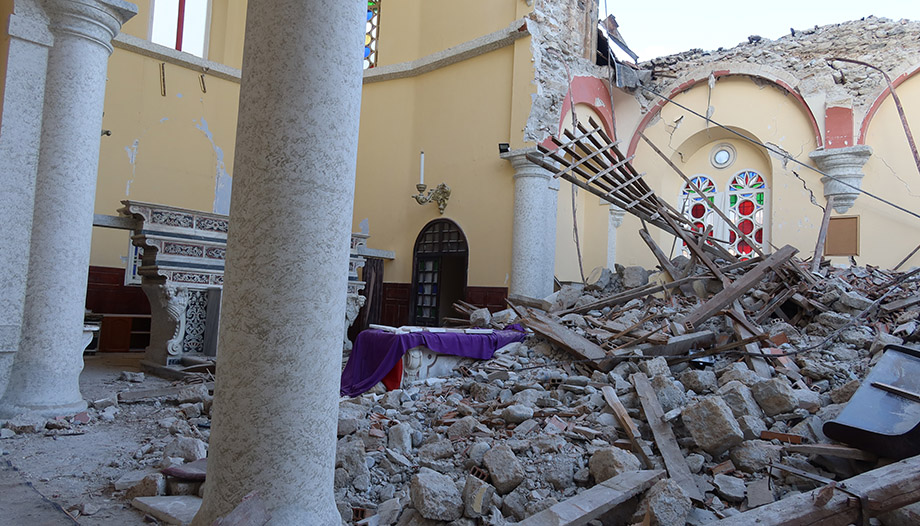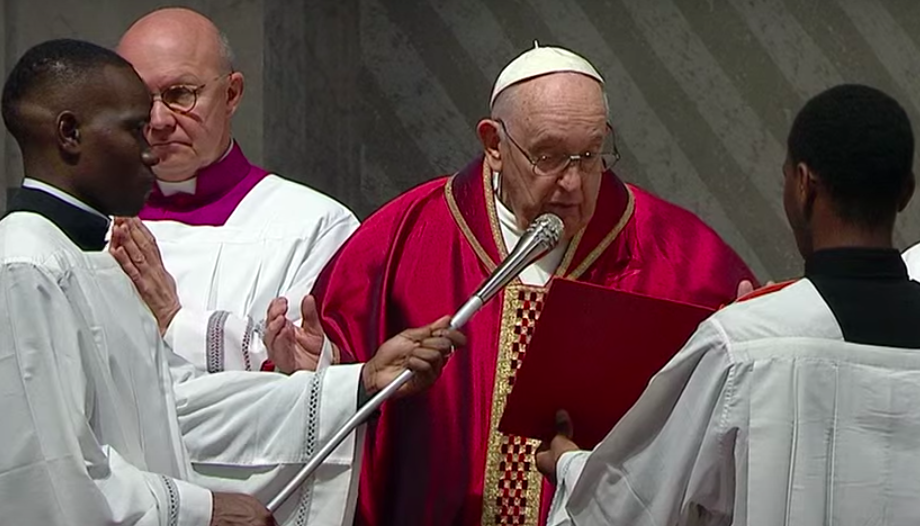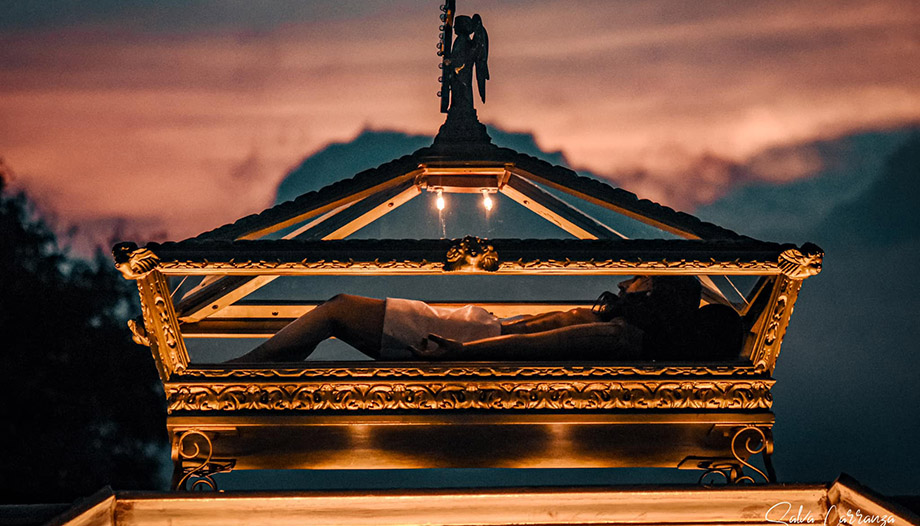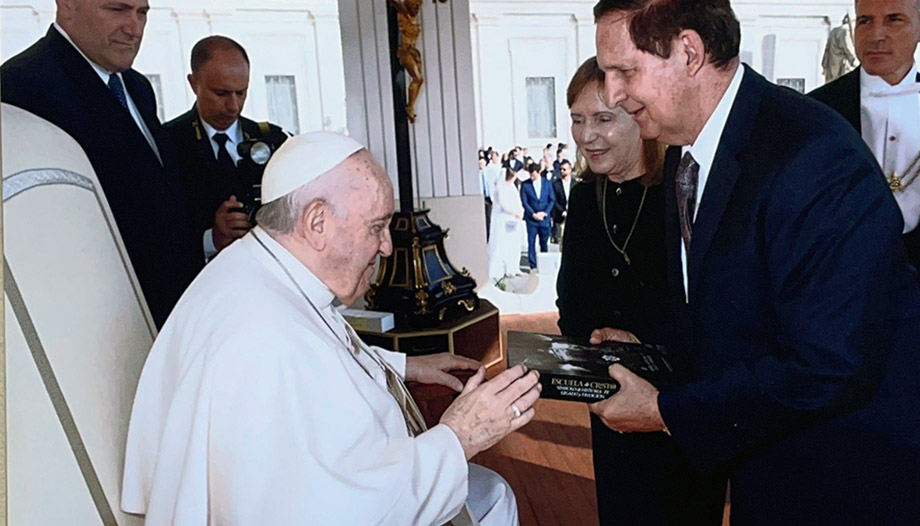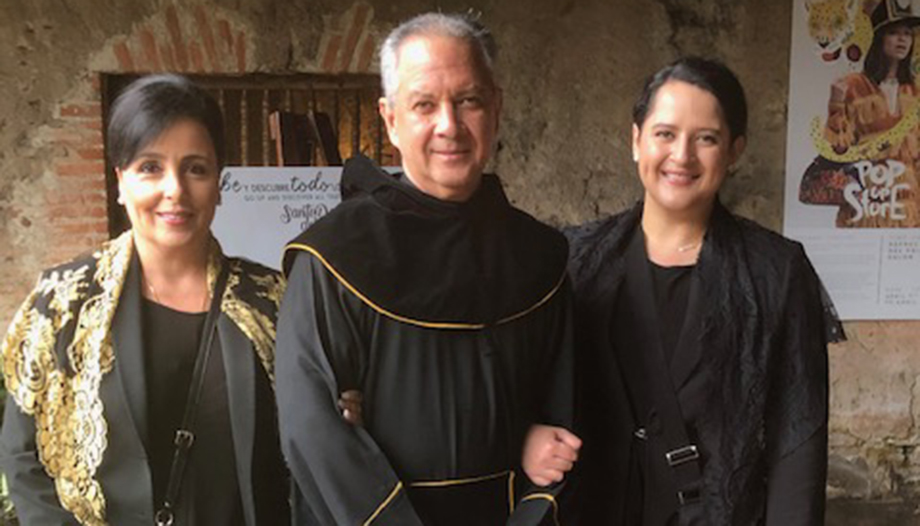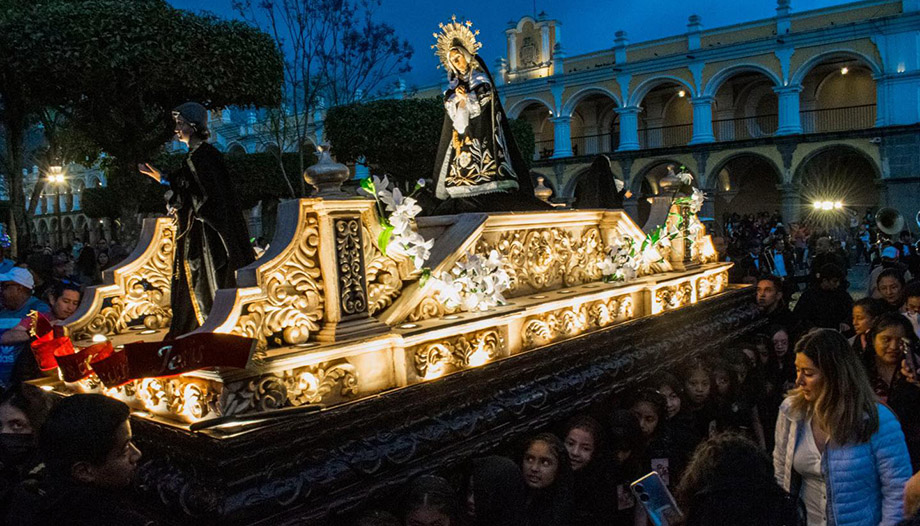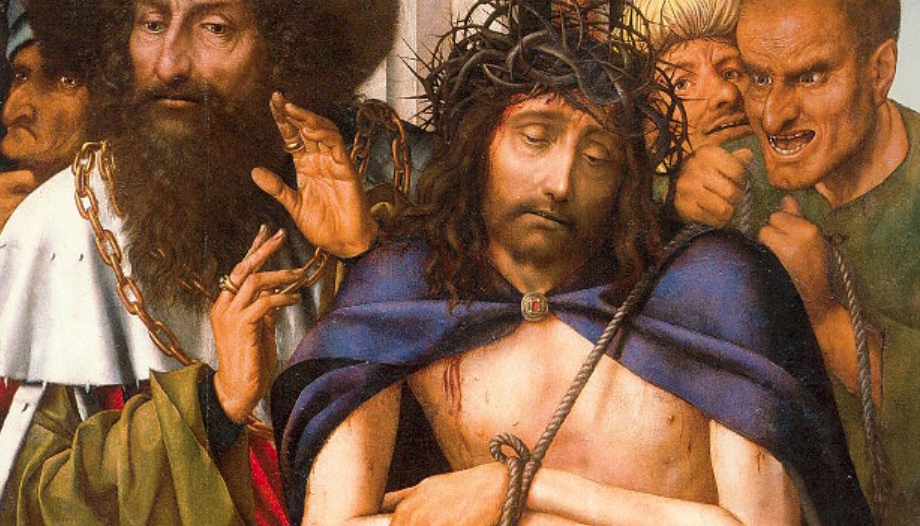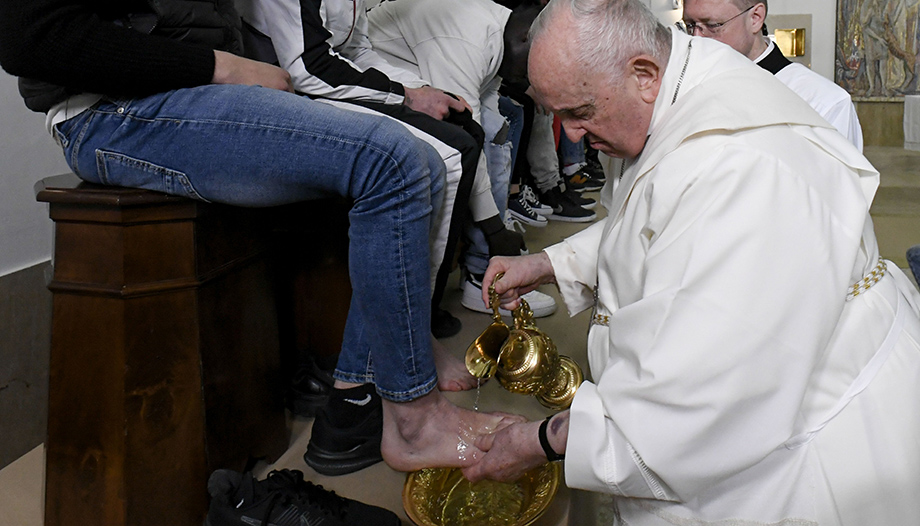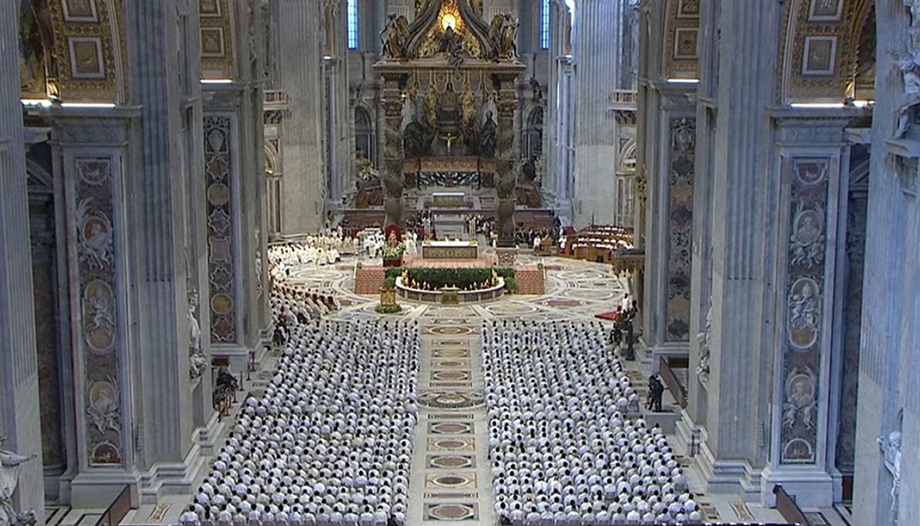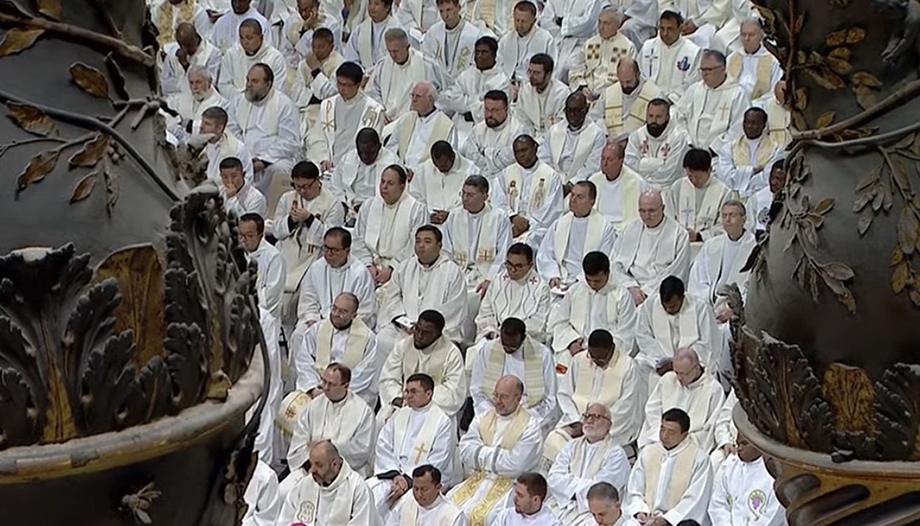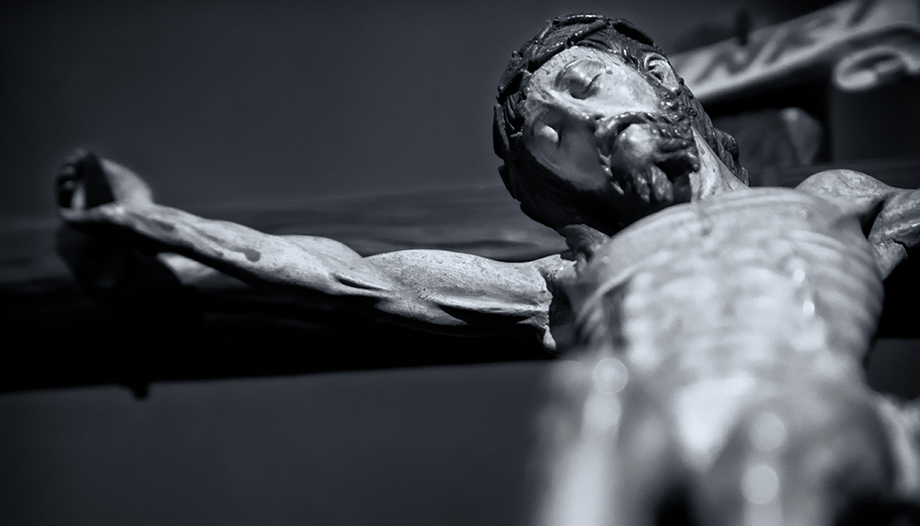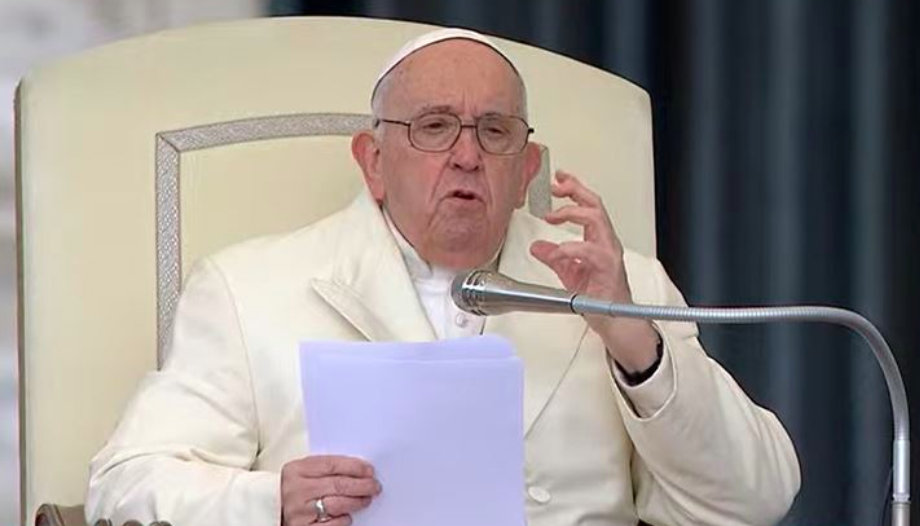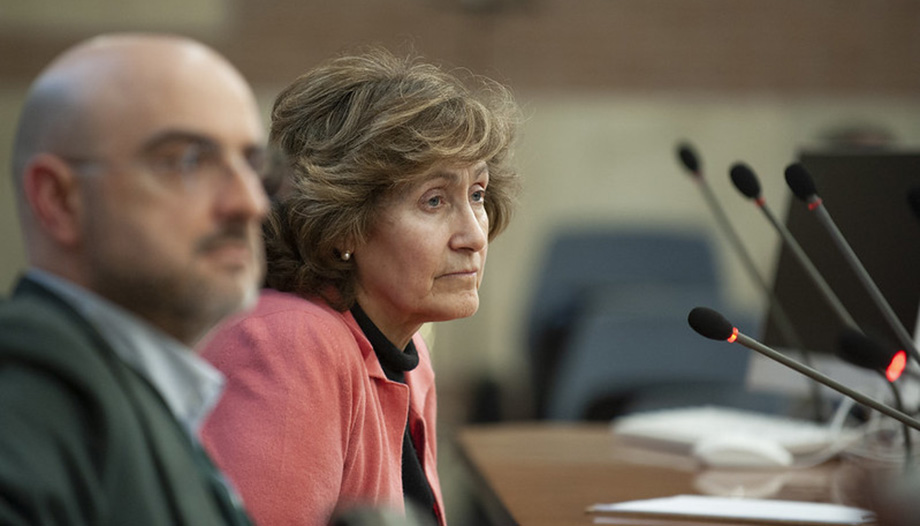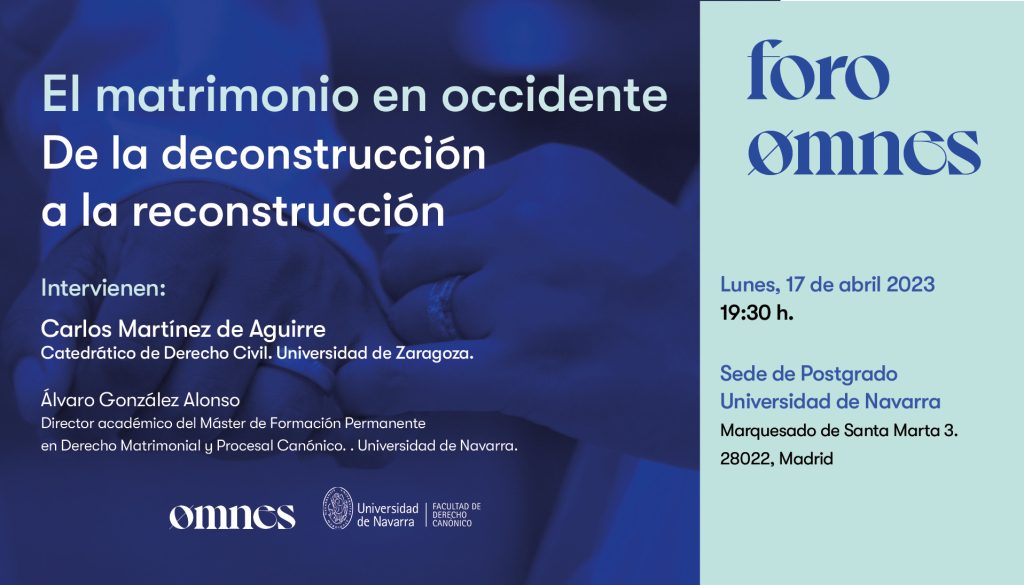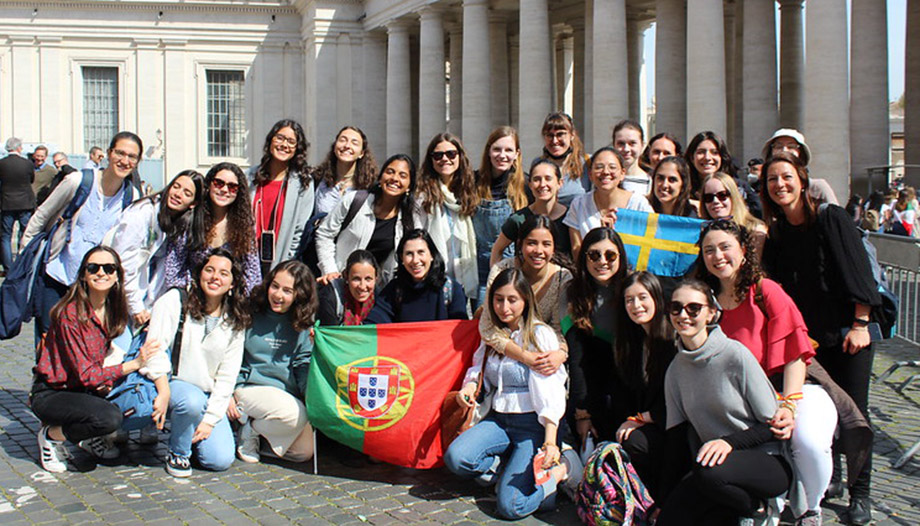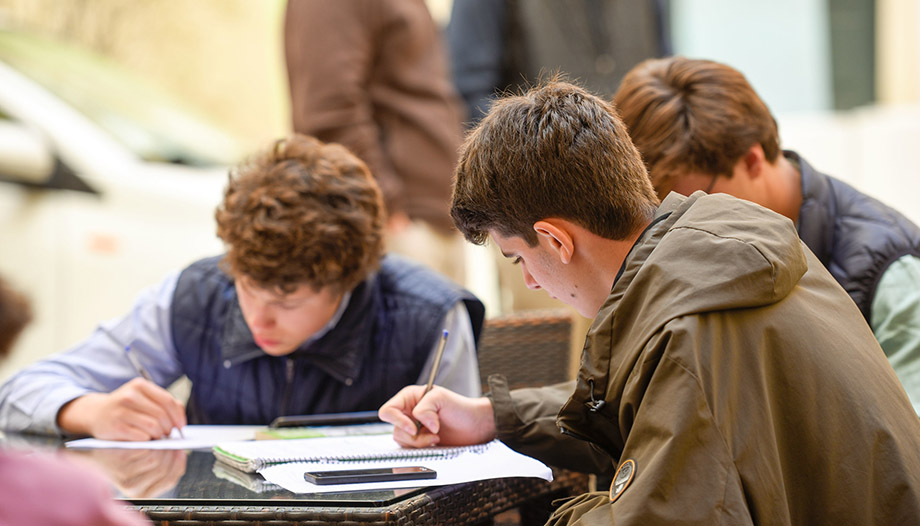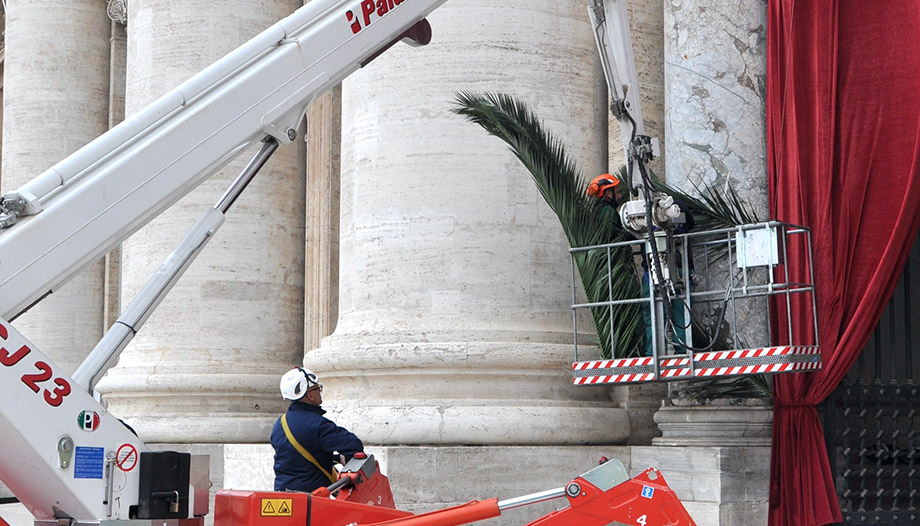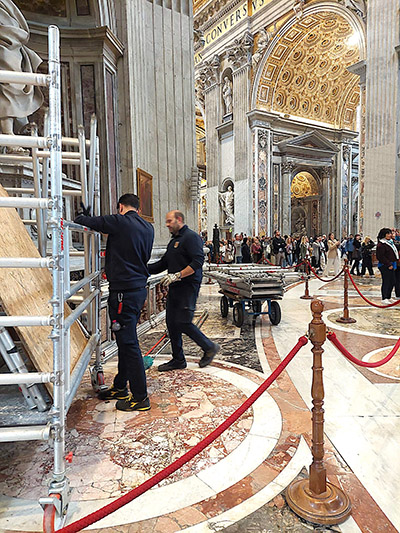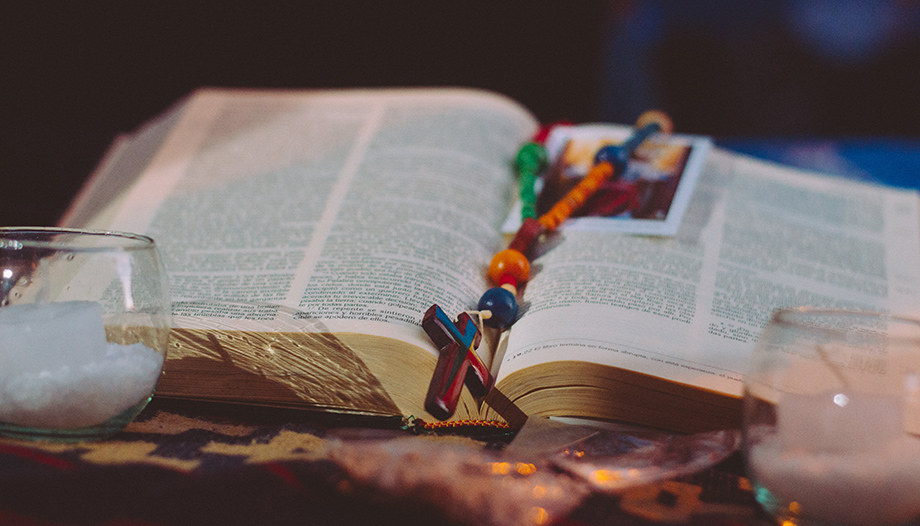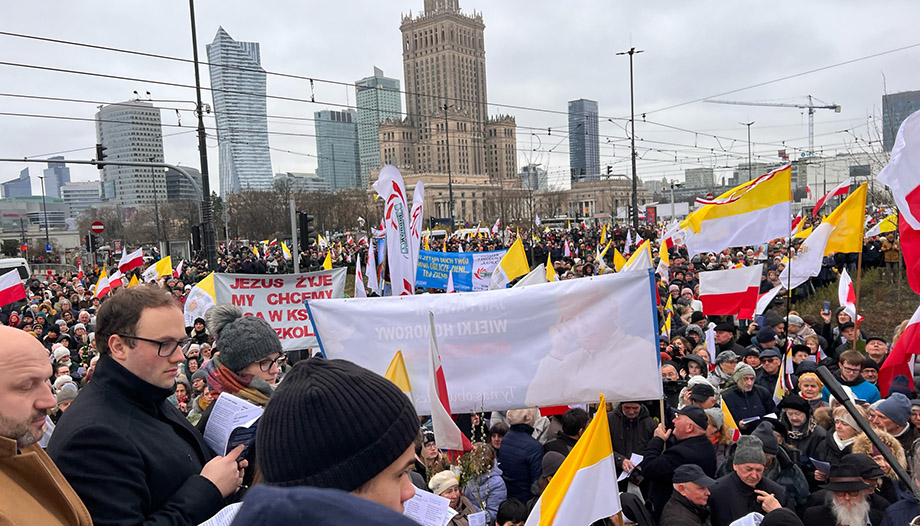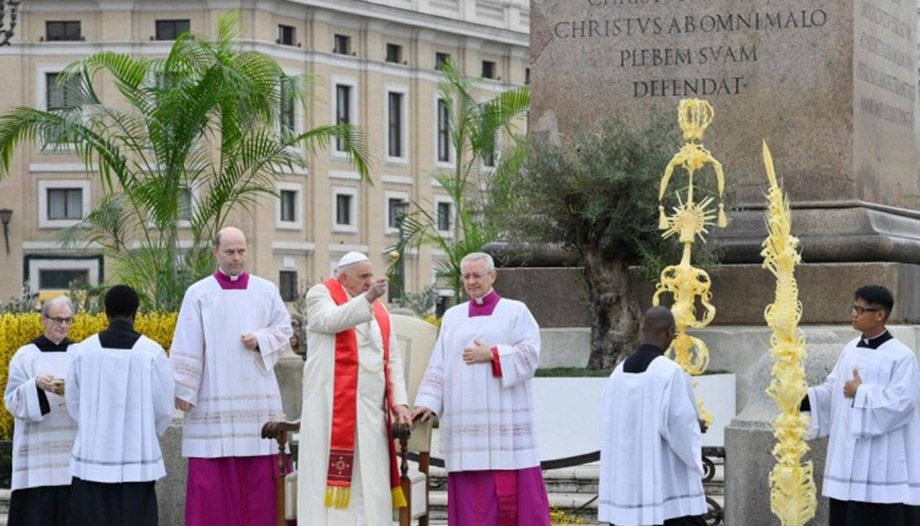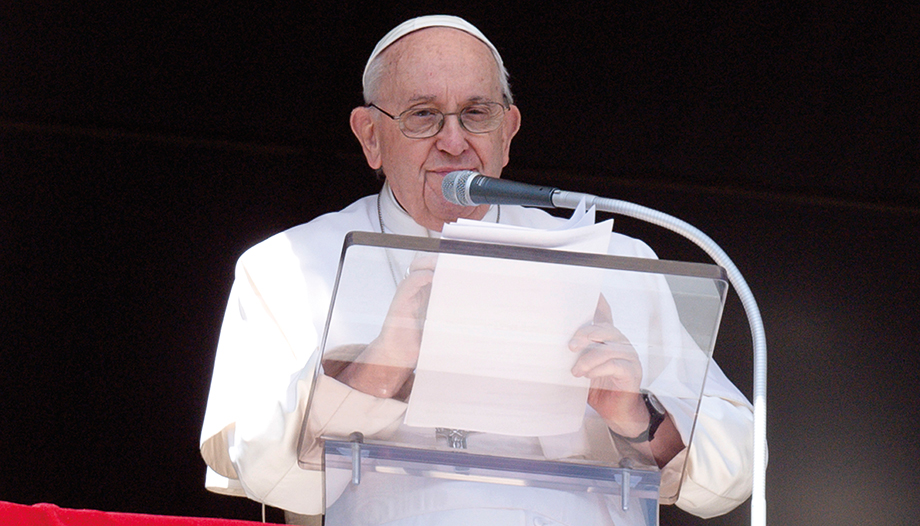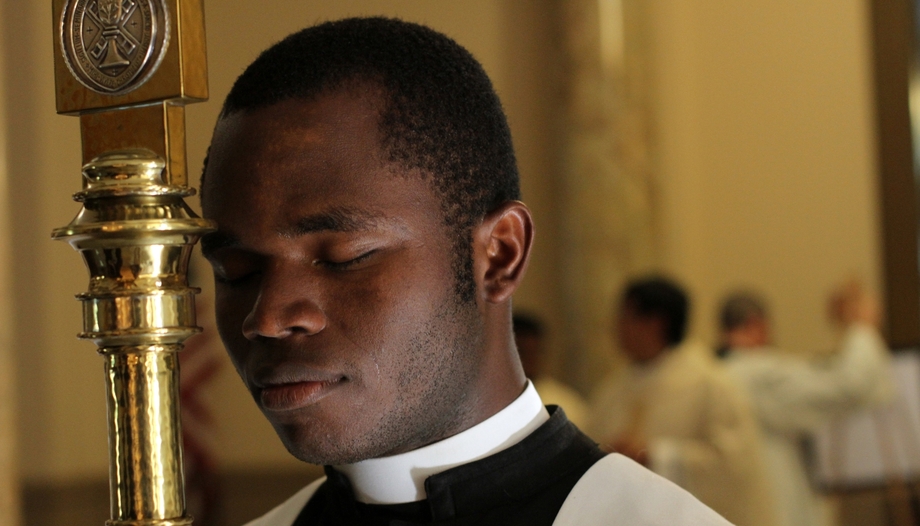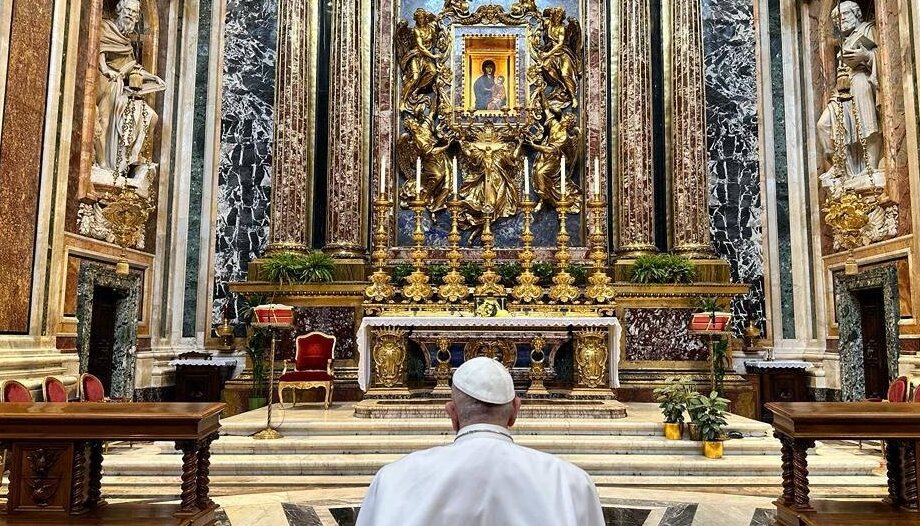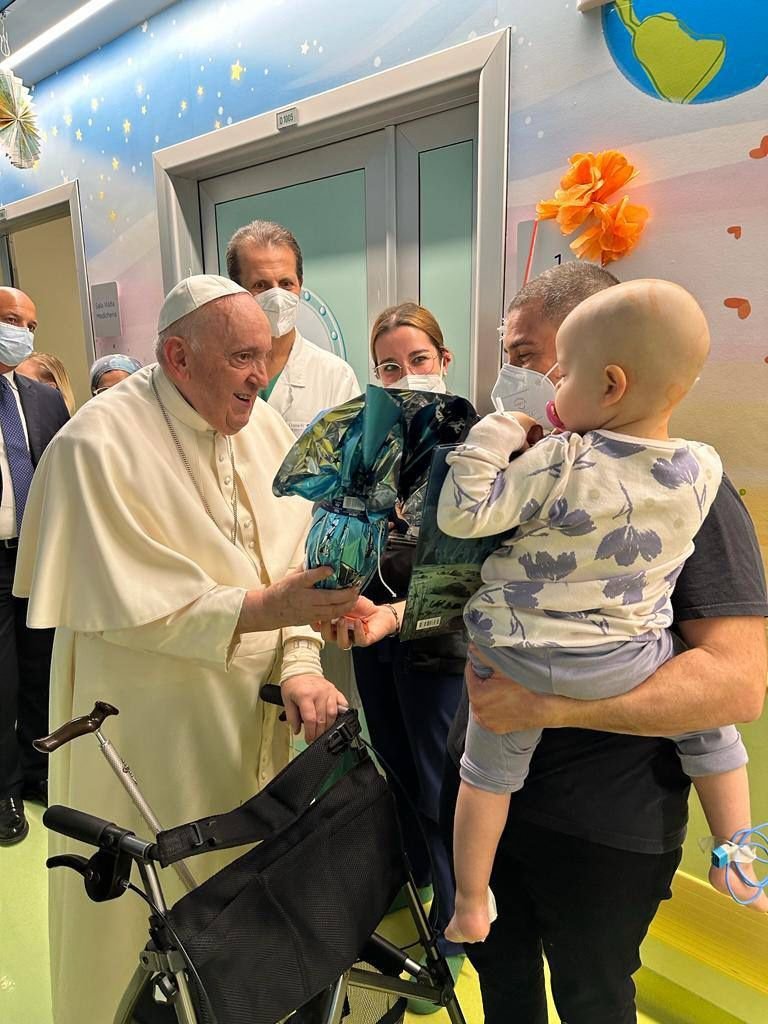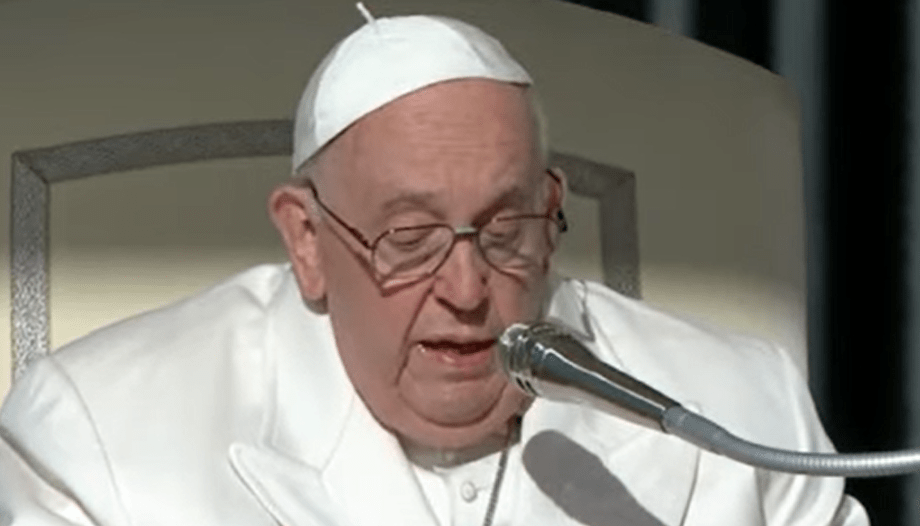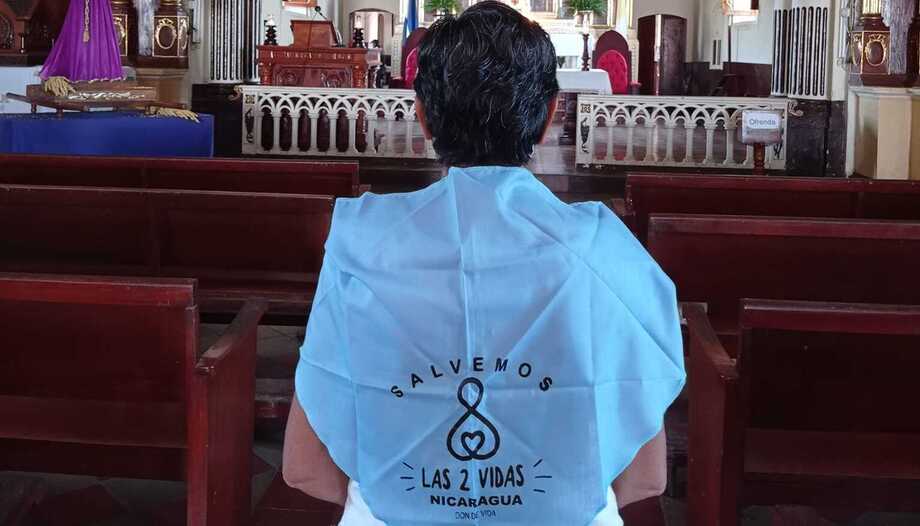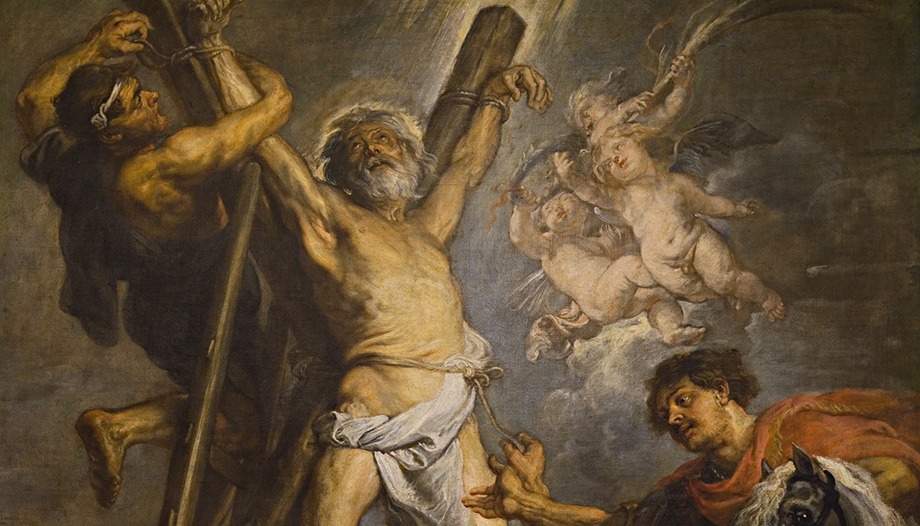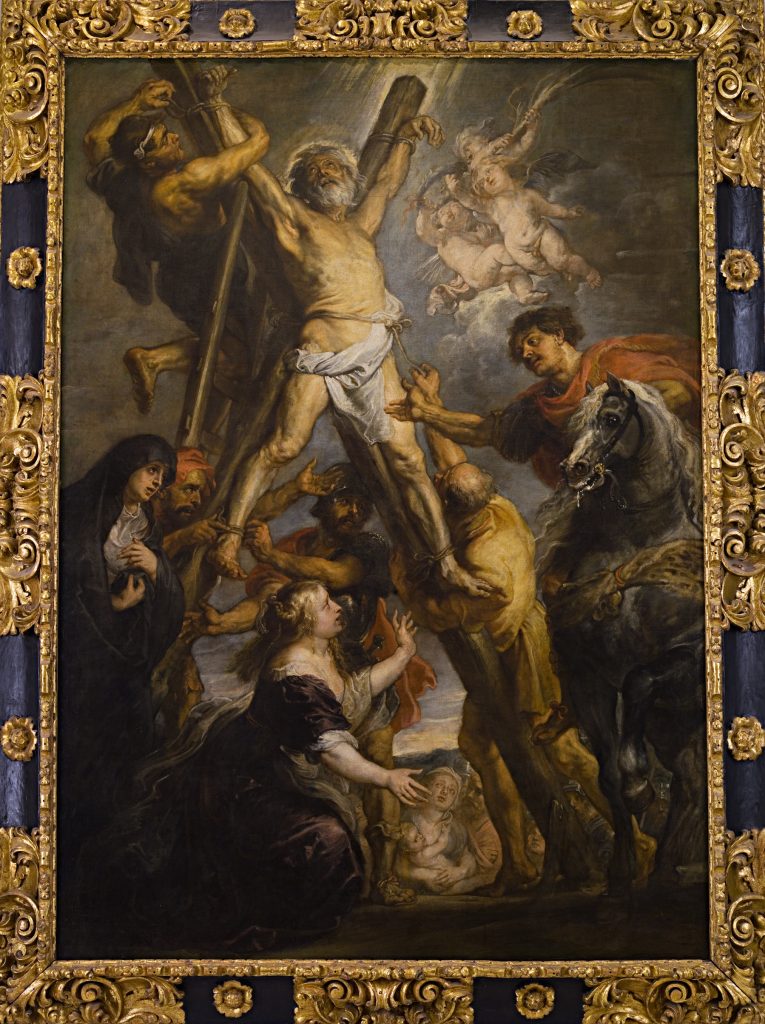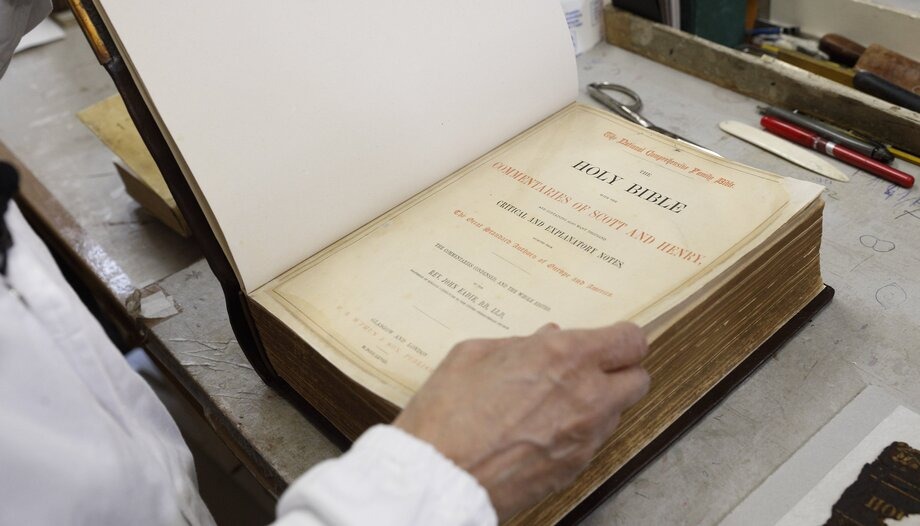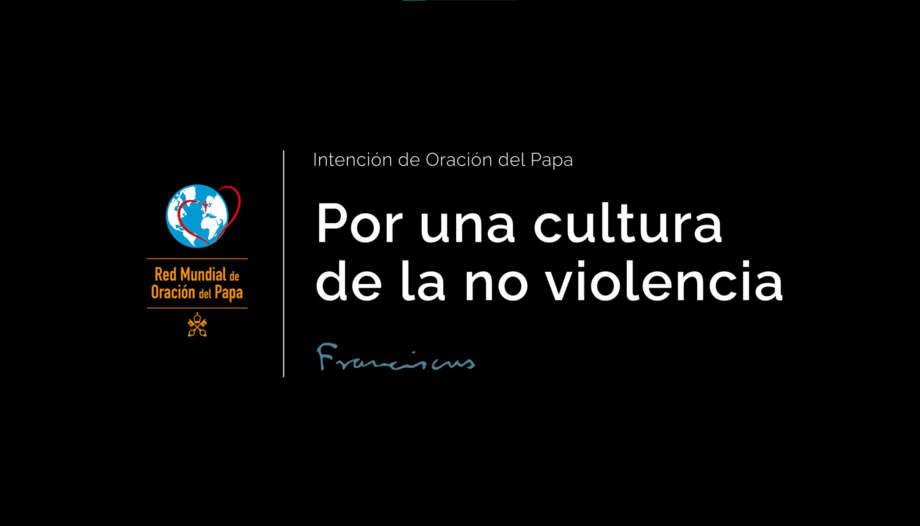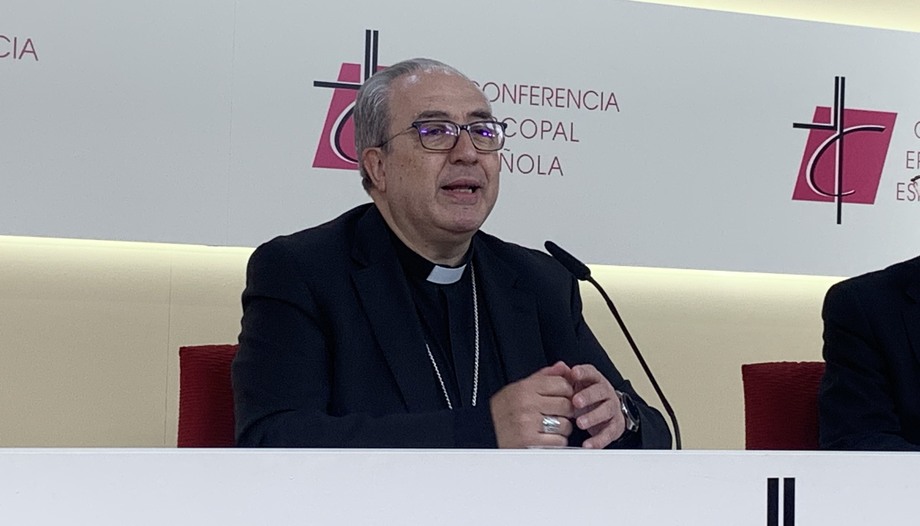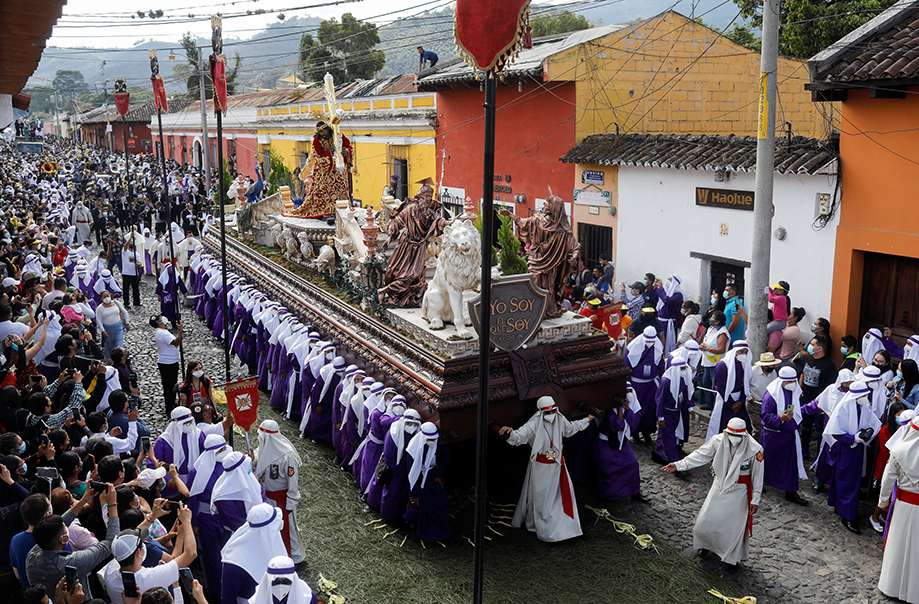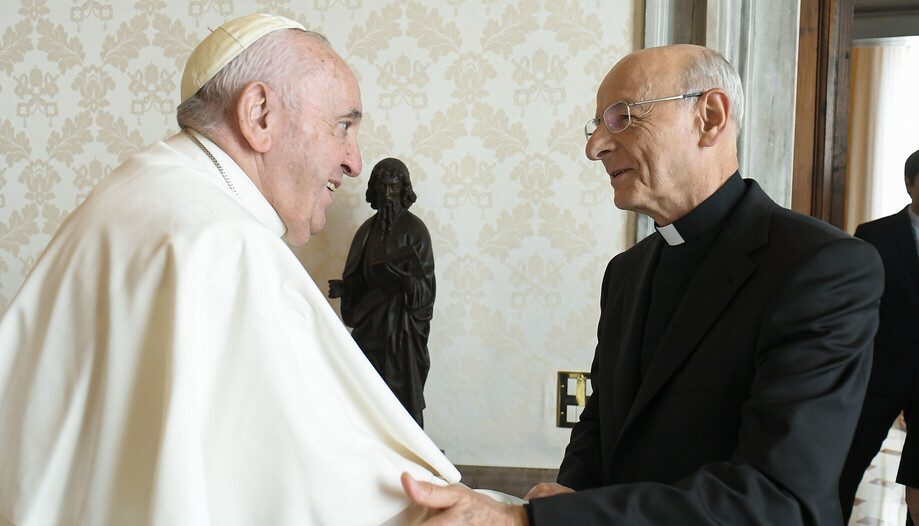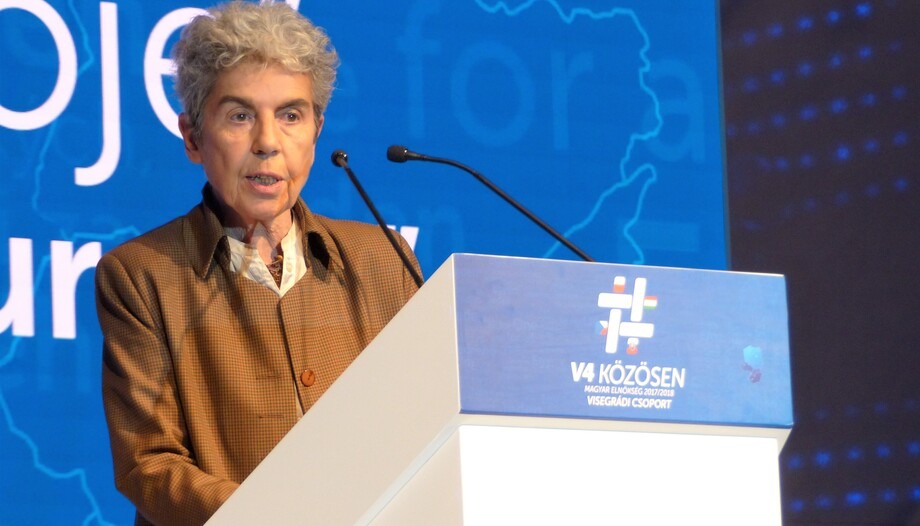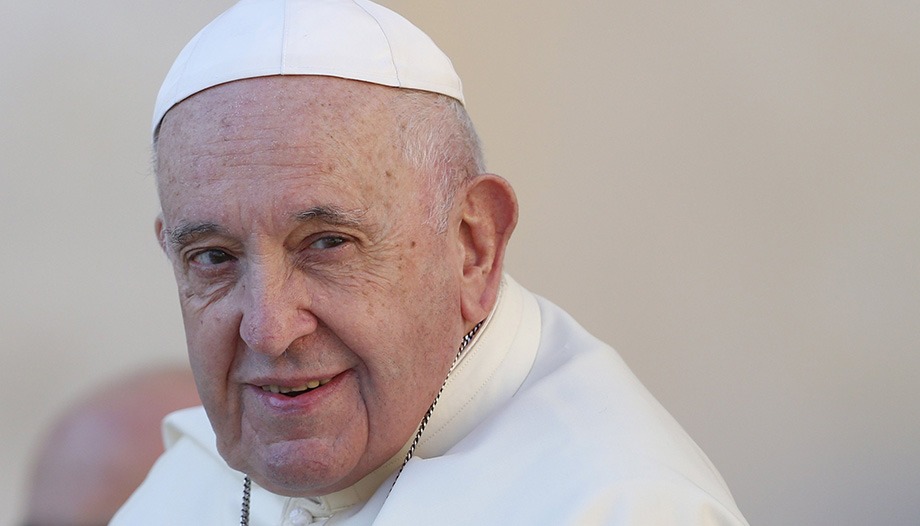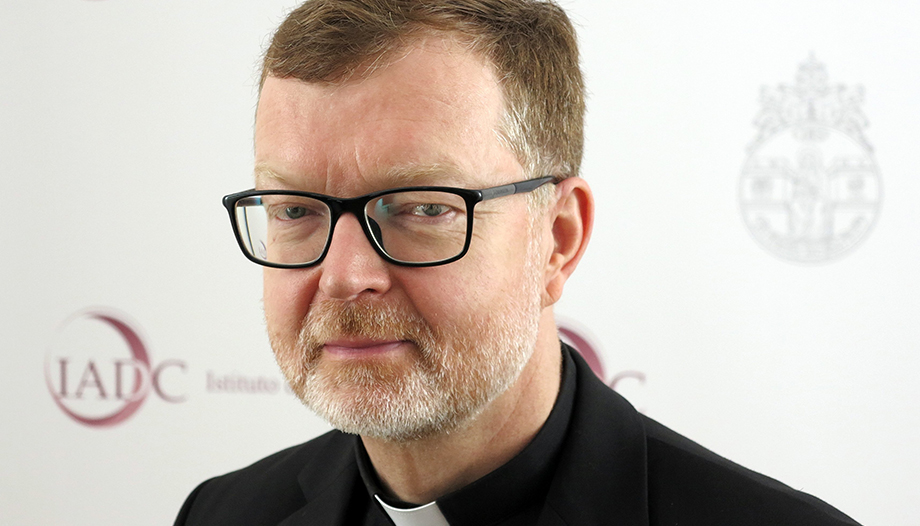The Pope's teachings on the meaning of Lent - the preparation for Lent and the Easter-, starting on Ash Wednesday, have focused on the Angelus of these Sundays. In them he treads in the footsteps of the Gospel passages that the liturgy proposes: the temptations of the Lord, his transfiguration, the encounter with the Samaritan woman, the healing of the man born blind and the resurrection of Lazarus.
Time to "get back to basics".
In his homily on Ash Wednesday, celebrated in the Basilica of Santa Sabina (22-II-2023), the Pope presented Lent - as a brief synthesis of an important dimension of the Christian life - as "the right time to get back to basics"; that is, "to divest ourselves of what weighs us down, to reconcile ourselves with God, to rekindle the fire of the Holy Spirit that dwells hidden in the ashes of our fragile humanity. Return to the essential". A time of grace for "to return to the essential, which is the Lord". Thus, the rite of ashes introduces us to this path of return, invites us - Francis emphasized - "... to return to the world...".to return to what we really are y to return to God and to our brothers and sisters".
"God also lives Lent".
He used this phrase to distinguish two steps. Lent, first, as a time of "returning to who we are".. And what are we? We are creatures that come from the earth and need Heaven, but first we will return to dust, and then we will rise again from our ashes. God created us, we are his, we belong to him. And the Pope formulated something quite original: "We are God's creatures, we belong to him.As a tender and merciful Father, He also lives Lent, because He desires us, waits for us, awaits our return, and always encourages us not to despair, even when we fall into the dust of our fragility and our sin".
God "knows full well that we are but dust" (Ps 103:14). And, Peter's successor observes: "We, however, often forget this, thinking that we are self-sufficient, strong, invincible without Him; we use make-up to believe we are better than we are. We are dust".
Hence the need to divest ourselves of "We are not only a result of the desire to put ourselves at the center, to be the first in the class, to think that only with our abilities we can be the protagonists of life and transform the world around us".
In other wordsThis is "'a time of truth' to take off the masks we wear every day pretending to be perfect in the eyes of the world; to fight, as Jesus told us in the Gospel, against falsehood and hypocrisy. Not those of others, but our own; to look them in the face and fight".
Leaving the bastion of self
In returning to the essentials of what we are before God - the Pope continues - Lent appears to us as "a favorable time to rekindle our relationships with God and with others; to open ourselves in silence to prayer and to come out of the bulwark of our closed self; to break the chains of individualism.and from isolation and to rediscover, through meeting and listening, who it is that walks beside us every day, and to relearn to love him or her as a brother or sister.".
How to achieve all this? Lent proposes that we follow three main paths: almsgiving, prayer and fasting. If we humbly place ourselves under the Lord's gaze, we will "almsgiving, prayer and fasting do not remain outward gestures, but express who we truly are: children of God and brothers and sisters among us.".
Therefore, these are "favorable days to remind us that the world does not close in the narrow limits of our personal needs [...], to give God the primacy of our life, [...] to stop the dictatorship of the agendas always full of things to do; of the pretensions of an increasingly superficial and cumbersome ego; and to choose what really matters".
On the road to Easter - proposes the Bishop of Rome- Let us fix our gaze on the Crucified One [...]. And at the end of the journey we will find with greater joy the Lord of life; we will find Him, the only one who will make us rise from the ashes.".
No dialogue with the devil
On the Second Sunday (Angelus, 26-II-2023), Francis contemplated the scene of the Lord's temptations and his battle against the devil (cf. Mt 4:1-11). The devil, a specialist in dividing, tries to separate Jesus from the Father, "to divert it from its mission of unity for us". This unity consists in making us share in the love that unites the divine Persons of the Father, the Son and the Holy Spirit.
The poisons of division
The Pope interprets the scene: "The evil one then tries to instill in Him [Jesus] three potent 'poisons' in order to paralyze His mission of unity. And these poisons are attachment - attachment to needs such as hunger - distrust - towards His Father - and power - the thirst for power.".
Francis adds that these are also temptations that the devil employs with us, "in order to divide us from the Father and make us no longer feel that we are brothers and sisters to each other; he uses them to drive us to loneliness and despair.".
But Jesus overcomes the devil without dialogue, without negotiating or arguing with him. He confronts him with the Word of God that speaks of freedom from things (cf. Deut. 8:3), of trust (cf. Deut. 6:16) and of service to God (cf. Deut. 6:13).
This is where Francisco takes his cue from to ask us questions and give us advice: "What place does God's Word have in my life? Do I turn to God's Word in my spiritual struggles? If I have a vice or a temptation that keeps recurring, why don't I look up, having them help me, a verse from God's Word that responds to that vice? Then, when the temptation comes, I recite it, I pray it, trusting in the grace of Christ.".
The luminous beauty of Love
The Second Sunday of Lent places us in the transfiguration of the Lord (cf. Mt 17:1-9), which manifests all his beauty as the Son of God. The Pope poses a question that is not at all obvious to us: "Is the transfiguration of our Lord a question that is not obvious to us?what does this beauty consist of?". And he answers that it does not consist in a special effect, but that, since God is Love, it consists in "the splendor of divine Love incarnated in Christ". The disciples already knew the face of Love, but they had not realized its beauty.
To walk, to serve, to love
Now God's beauty is shown to them in this way: as a foretaste of paradise, which prepares them to know how to recognize that same beauty".when he ascends to the cross and his face is disfigured.". Peter would have wanted to stop time, but Jesus does not want to take his disciples away from the reality of life, which includes the way to follow him to the cross. "The beauty of Christ -Francis seems to reply to certain thinkers of modernity such as Marx and Nietzsche. it is not alienating, it takes you always ahead, it does not make you hide: go ahead!".
This is a teaching for us. Being with Jesus is like "we learn to recognize in his face the luminous beauty of self-giving love, even when it bears the marks of the cross.".
And not only that, but we can also learn to discover the light of God's love in others: "We can also learn to discover the light of God's love in others.It is at their school that we learn to capture the same beauty in the faces of the people who walk beside us every day: family members, friends, colleagues, those who in various ways take care of us.. How many luminous faces, how many smiles, how many wrinkles, how many tears and scars speak of love around us! Let us learn to recognize them and to fill our hearts with them.".
The consequence has to be to get moving, "to bring also to others the light we have received, with the concrete works of love (cf. 1 Jn 3:18), immersing ourselves with more generosity in our daily tasks, loving, serving and forgiving with more enthusiasm and availability".
God's thirst and our thirst
The Gospel of the Third Sunday of Lent presents Jesus' encounter with the Samaritan woman (cf. Jn 4:5-42): "one of the most beautiful and fascinating encounters". of the Lord (cfr. Angelus, 12-III-2023).
He asks her: "give me to drink".. It is, the Pope explains, a ".image of God's humiliation". Jesus wanted to bind himself to our poverty, to our littleness, because he thirsted and thirsts for each one of us.
With an Augustinian-style argument, Francis explains: "Jesus' thirst, in fact, is not only physical, it expresses the deepest thirst of our life: it is above all thirst for our love. He is more than a beggar, he thirsts for our love. And it will emerge at the culminating moment of the passion, on the cross; there, before dying, Jesus will say: 'I thirst' (Jn 19:28). That thirst for love that led him to descend, to humble himself, to become one of us".
But it is the Lord who gives the Samaritan woman to drink. And he speaks to her of the living water of the Holy Spirit, which from the cross he pours out, together with his blood, from his open side (cf. Jn 19:34).
That is also what it does with us: "Jesus, thirsting for love, quenches our thirst with love. And he does with us as he did with the Samaritan woman: he goes out to meet us in our daily lives, he shares our thirst, he promises us the living water that makes eternal life spring up in us (cf. Jn 4:14)".
Everyone is (we are) thirsty
Jesus not only asks for a drink but, as he does with the Samaritan woman,"asks us to care for the thirst of others."We hear it from so many - in the family, at work, in the other places we frequent - who thirst for closeness, attention, listening; we hear it from those who thirst for the Word of God and need to find in the Church an oasis where they can drink water. We are told this by our society, where haste, haste to consume and above all indifference dominate, this culture of indifference generates aridity and inner emptiness. "And let's not forget it, says Franciscogive me a drink" is the cry of so many brothers and sisters who lack water.to live, while we continue to pollute and disfigure our common home, which also, exhausted and thirsty, is thirsty".
Like the Samaritan woman," Francis proposes, "we too must stop thinking about quenching our thirst (material, intellectual or cultural), "but with the joy of having met the Lord we will be able to satisfy others: to give meaning to the lives of others, not as owners, but as servants of this Word of God that has satiated us, that continually quenches us; we will be able to understand their thirst and share the love that He gave us."
And the Pope invites us to ask ourselves: "Do I thirst for God, do I realize that I need his love like water to live? And then, I who am thirsty, am I concerned about the thirst of others, the spiritual thirst, the material thirst?"
Attitudes of the human heart before Jesus
On the fourth Sunday, the Gospel shows Jesus restoring sight to a man blind from birth (cf. Jn 9:1-41). "But this prodigy," Francis observes, "is poorly received by various individuals and groups." (cfr. Angelus19-III-2023). In his attitudes we see the fundamental attitudes of the human heart before Jesus: "the good human heart, the lukewarm human heart, the fearful human heart, the courageous human heart."
On one side are the disciples, who, faced with the blind man's problem, want to look for a culprit, instead of asking themselves what they should do.
Then there are the neighbors, who are skeptical: they don't believe that the one who now sees is the same blind man as before. And his parents don't want any trouble either, especially with the religious authorities.
All of them claim to be "closed hearts before the sign of Jesus, for different reasons: because they are looking for a culprit, because they do not know how to be surprised, because they do not want to change, because they are blocked by fear.".
It also happens to us today, says Francisco: "Faced with something that is really a message of testimony from a person, a message from Jesus, we fall into that: we look for another explanation, we don't want to change, we look for a more elegant way out than accepting the truth."
Let yourself be cured in order to see
And so we come to the point that the only one who reacts well is the blind. "He is happy to see, he testifies to what has happened to him in the simplest way: 'I was blind and now I see'. He tells the truth". He does not want to invent or hide anything, he is not afraid of what people will say, because Jesus has given him his full dignity, without even asking him to thank him, and has made him be reborn.
"And this is clear." -Francisco points out-It always happens: when Jesus heals us, he gives us back our dignity, the full dignity of the healing of Jesus, a dignity that comes from the depths of our heart, that takes hold of our whole life.".
As he often does, Francis questions us about the same scene: "What position did we take, what would we have said then? [...] Do we allow ourselves to be imprisoned by the fear of what people will think? [How do we welcome people who have so many limitations in life, be they physical, like this blind man; be they social, like the beggars we meet on the street? Do we welcome this as a curse or as an opportunity to approach them with love?"
And Peter's successor advises us to ask for "the grace to be amazed every day by God's gifts and to see the various circumstances of life, even the most difficult to accept, as opportunities to do good, as Jesus did with the blind man".
 Michael McConnellRead more : "Roe v. Wade was one of the most poorly reasoned rulings in the history of the Supreme Court".
Michael McConnellRead more : "Roe v. Wade was one of the most poorly reasoned rulings in the history of the Supreme Court". Isabel Vaughan-Spruce: "The damage abortion inflicts on women alone should be enough to make us pro-life".
Isabel Vaughan-Spruce: "The damage abortion inflicts on women alone should be enough to make us pro-life".










